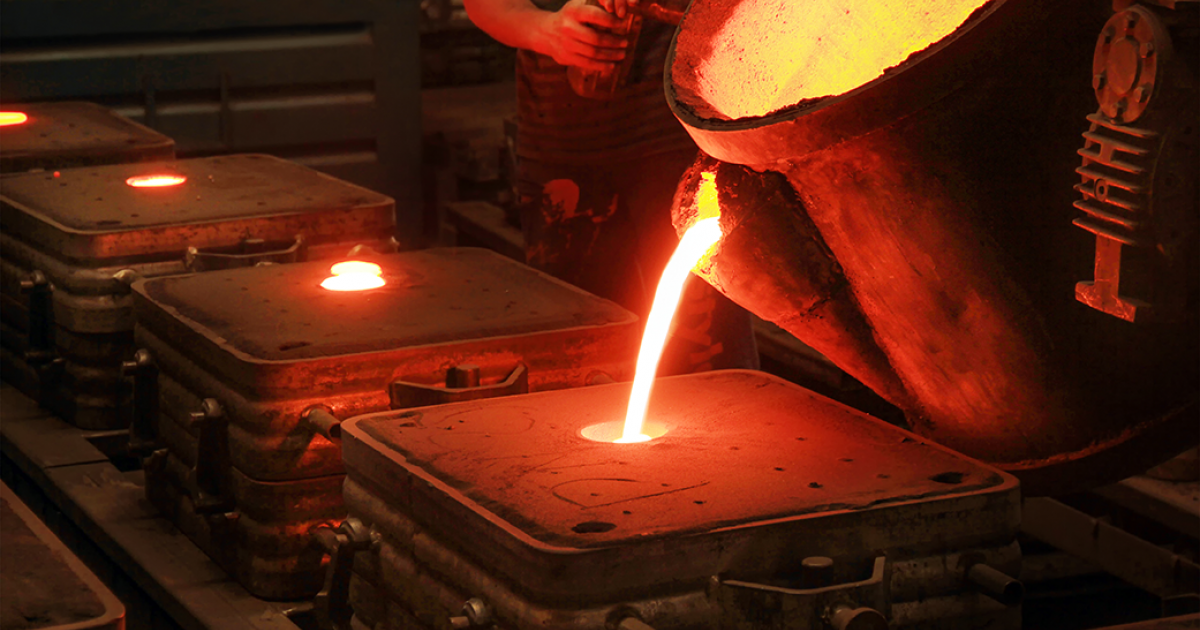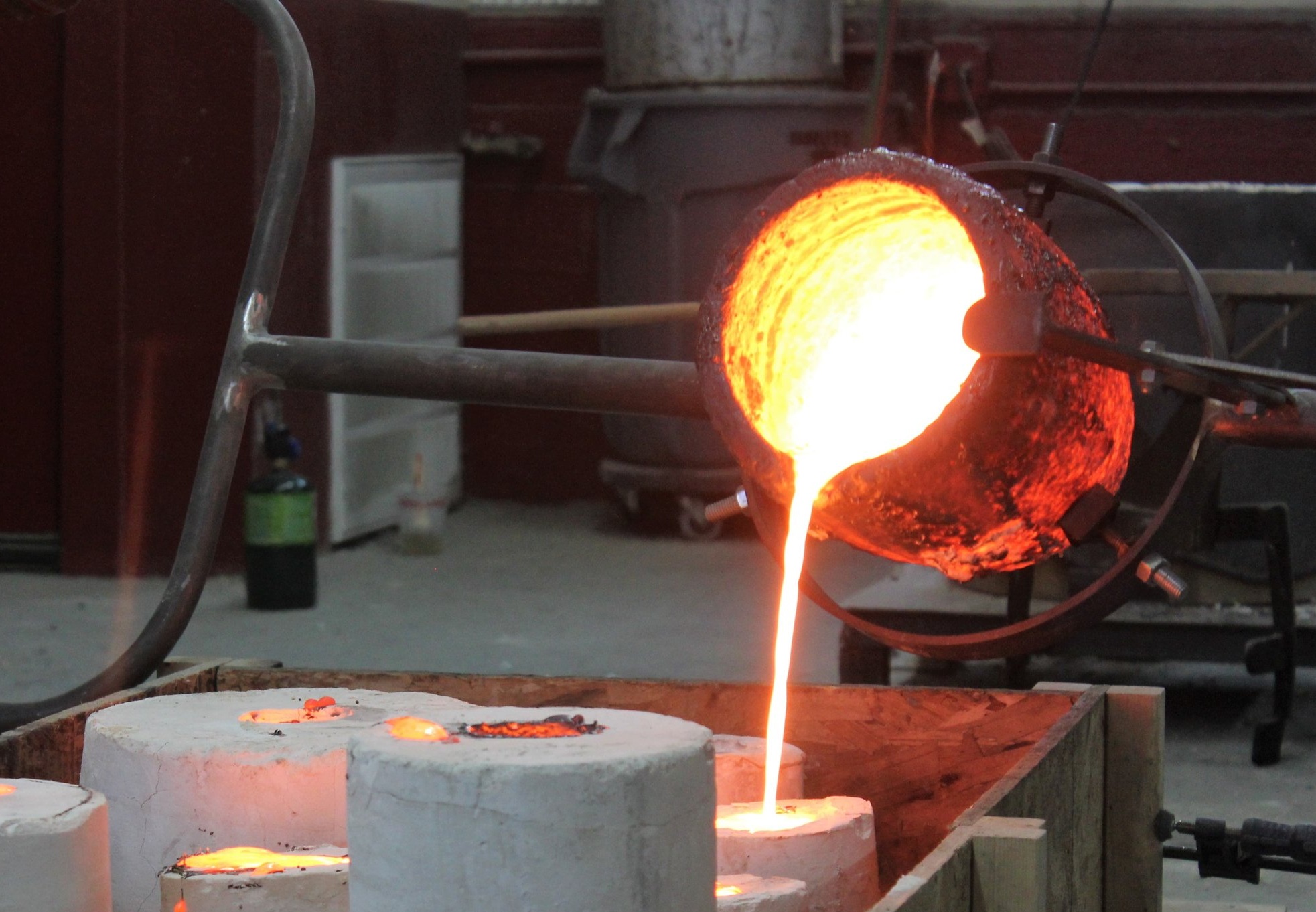Why a Metal Foundry Combines Science and Skill
Wiki Article
Recognizing Metal Casting Procedures: Technologies and Fads in the Foundry Sector
The foundry market is experiencing considerable makeovers driven by technological developments. Technologies such as 3D printing and synthetic intelligence are reshaping metal casting processes, improving effectiveness and precision. Sustainable methods are getting traction, emphasizing the significance of environmental obligation. Additionally, the introduction of sophisticated materials and automation is enhancing total casting high quality. These advancements recommend a critical shift in the industry, questioning about future instructions and effects for manufacturers.Innovations in 3D Printing for Metal Casting
Current developments in 3D printing modern technology have considerably changed the landscape of metal casting. The integration of additive manufacturing strategies has actually enabled the rapid production of complex patterns and mold and mildews that were difficult or previously challenging to achieve with typical techniques. By utilizing products such as sand and steel powders, producers can create intricate geometries that boost style flexibility and lower material waste. This development not just accelerates the prototyping process yet likewise allows for the customization of parts tailored to particular applications.
3D printing assists in shorter lead times, which is essential in sectors needing fast turnaround for parts. The innovation likewise sustains the manufacturing of light-weight structures, thereby improving power performance in output. Therefore, the foundry sector is observing a shift towards more sustainable practices, driven by the performance and precision provided by these modern-day 3D printing techniques in steel casting procedures.
The Duty of Expert System in Precision Manufacturing
As sectors progressively adopt advanced manufacturing innovations, expert system (AI) is playing an essential function in improving precision manufacturing procedures. AI algorithms examine substantial datasets to determine patterns and enhance production parameters, leading to enhanced precision and efficiency. In steel casting, AI aids in predictive upkeep, lowering downtime by projecting equipment failures prior to they happen.Furthermore, AI-driven simulations allow suppliers to model the casting process, refining styles and decreasing defects. Machine learning strategies enhance quality assurance by detecting anomalies in real-time, therefore guaranteeing that just items fulfilling rigid specs proceed via the assembly line.

Lasting Practices in the Foundry Industry
Sustainability has actually become a vital emphasis in the foundry sector, motivating manufacturers to adopt practices that reduce ecological effect while preserving performance - Aluminum Foundry. One popular technique consists of the recycling of products, particularly metals, which significantly decreases waste and power consumption. Shops are increasingly applying closed-loop systems, allowing for the reuse of sand and other casting products, thus minimizing the requirement for virgin sourcesAdditionally, energy-efficient technologies, such as electrical furnaces, are obtaining grip, as they lower greenhouse gas exhausts compared to conventional approaches. Several shops are checking out the use of green layers and eco-friendly binders to minimize poisonous by-products. read this article Employee training on lasting methods has also come to be necessary, fostering a culture of ecological responsibility within organizations. On the whole, these lasting methods not just add to environmental conservation however also improve the long-term practicality of the foundry sector in a progressively eco-conscious market.
Developments in Products for Enhanced Casting Top Quality
With the continuous advancement of the foundry industry, advancements in materials have come to be vital for boosting casting quality. Advanced alloys and composite products are increasingly being used to enhance mechanical residential properties and reduce problems in castings. These products often use premium strength-to-weight ratios and improved resistance to deterioration and wear, addressing the demands of modern-day applications.Additionally, the unification of nanomaterials is getting grip, permitting finer microstructures that cause boosted surface area finishes and dimensional accuracy. Metal Foundry. 3D printing technologies also play a function in creating complicated geometries with marginal waste, making it possible for using customized products that were formerly testing to cast
The advancement of ecologically pleasant binders and additives contributes to sustainable practices while preserving top notch end results. Jointly, these innovations not only enhance the efficiency of cast items however also straighten with the sector's shift towards sustainability and performance.
Automation and Robotics in Metal Casting Procedures
Automation and robotics are transforming metal casting processes by boosting and enhancing procedures precision. In modern-day foundries, robot systems are employed for tasks such as mold handling, pouring, and finishing, substantially reducing human treatment. This not just lessens the danger of mishaps but likewise guarantees consistent top quality in manufacturing.Automation modern technologies, such as computer mathematical control (CNC) makers, assist in intricate layouts and complicated geometries that were previously testing to achieve. In addition, real-time data analytics enable makers to keep track of procedures and maximize performance continually.
The combination of automation leads to enhanced efficiency and performance, allowing shops to meet expanding market needs while minimizing lead times. As the market welcomes these innovations, the labor force is additionally progressing, needing new skills to run and keep innovative machinery. In general, the fostering of automation and robotics is a you could try these out critical fad shaping the future of metal casting procedures.
Regularly Asked Concerns
What Is the History of Metal Casting Methods?
Metal casting strategies go back to ancient worlds, with proof of bronze casting in Mesopotamia around 3000 BCE. Over centuries, techniques developed substantially, incorporating developments in products and technology, forming modern industrial practices.Exactly How Does Metal Casting Impact the Environment?
Metal casting considerably influences the setting with energy intake, exhausts, and waste generation. Developments in sustainable practices and technologies aim to reduce these effects, promoting more ecologically friendly methods within the industry.What Precaution Are Critical in Foundries?

What Are Common Problems in Metal Casting Products?
Common defects in steel casting products include porosity, shrinking, misruns, cold shuts, and surface imperfections. These concerns occur from aspects such as improper temperature control, insufficient mold and mildew design, and contamination throughout the casting procedure.How Do Foundries Ensure Quality Assurance in Casting Processes?
Shops implement strenuous high quality control procedures with normal assessments, standard screening, procedure tracking, and adherence to sector criteria. These methods aid recognize issues early, guaranteeing the integrity and integrity of the last casting items.Technologies such as 3D printing and artificial intelligence are improving steel casting procedures, boosting check this performance and precision. Recent innovations in 3D printing modern technology have actually considerably transformed the landscape of metal casting. Automation and robotics are reinventing steel casting processes by improving and streamlining operations precision. Metal casting strategies date back to ancient human beings, with proof of bronze casting in Mesopotamia around 3000 BCE. Usual issues in steel casting items consist of porosity, shrinkage, misruns, cool shuts, and surface blemishes.
Report this wiki page